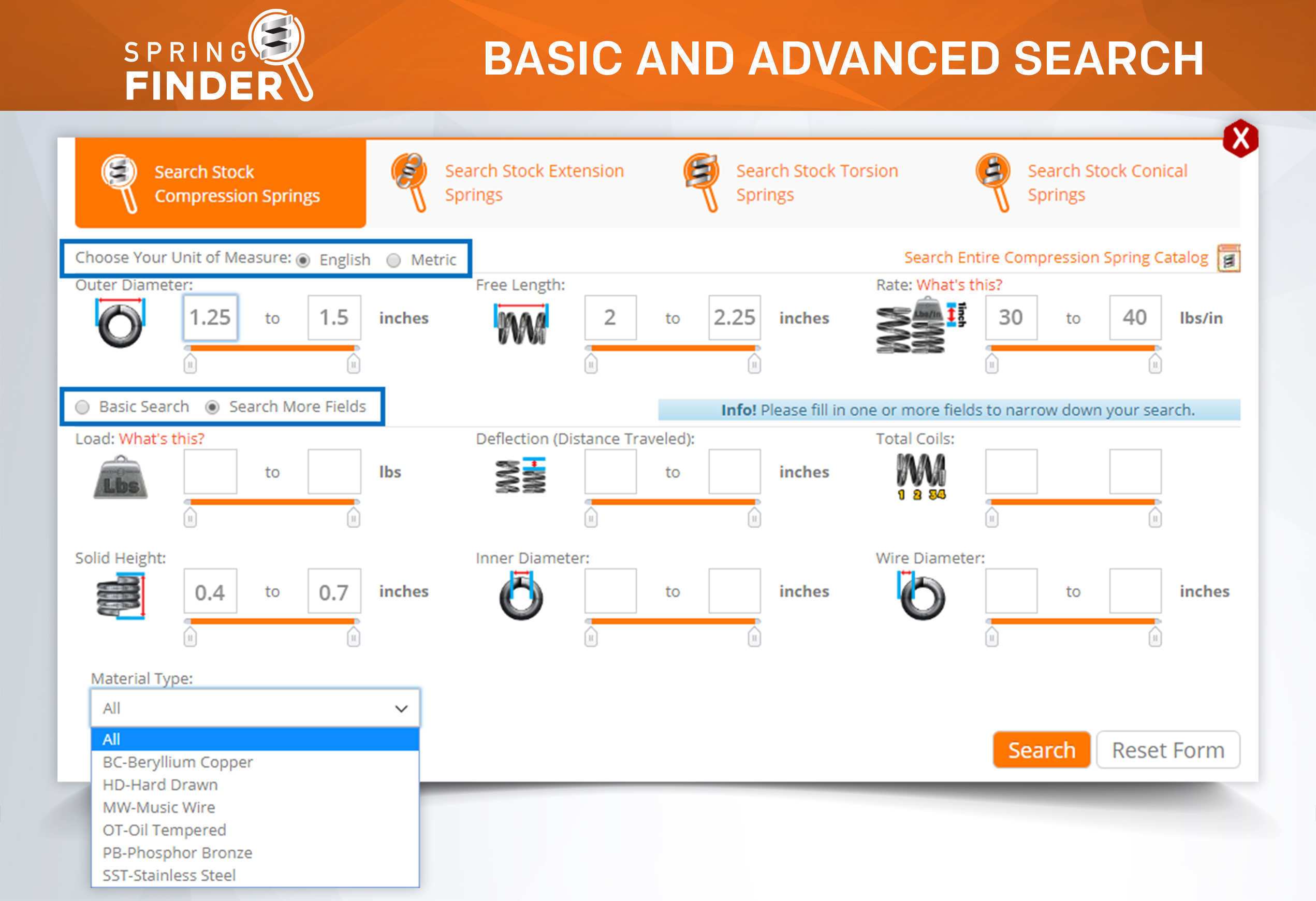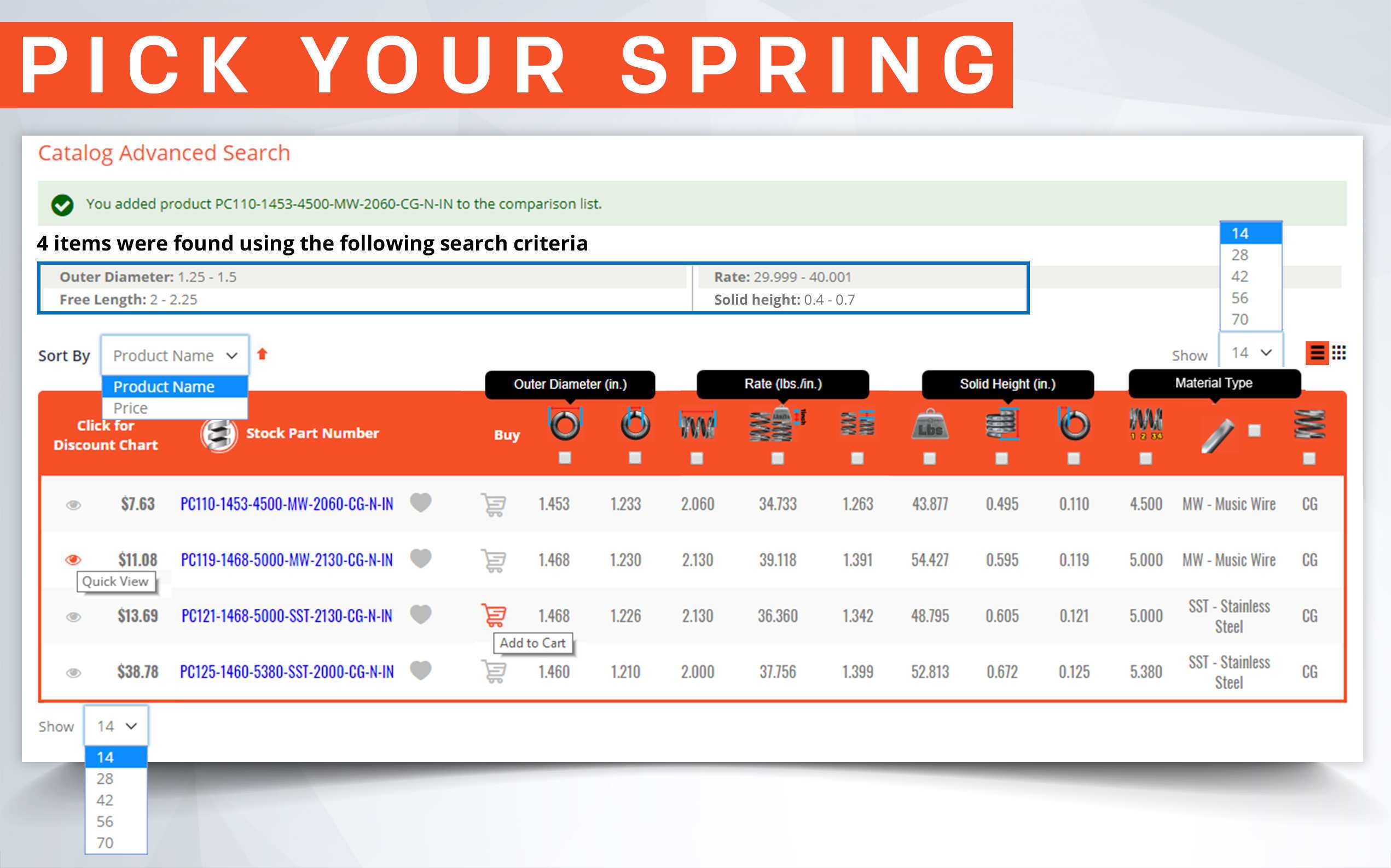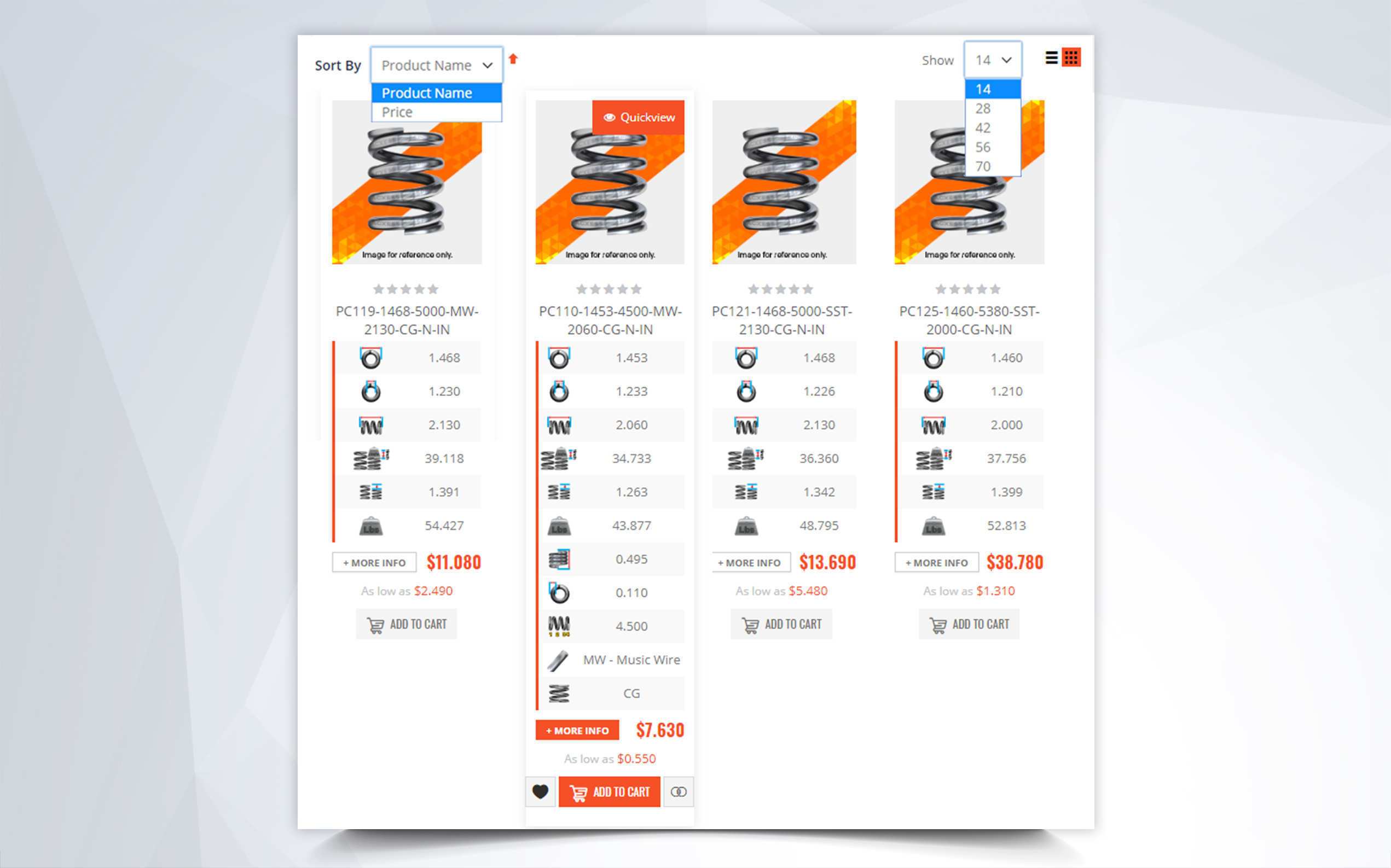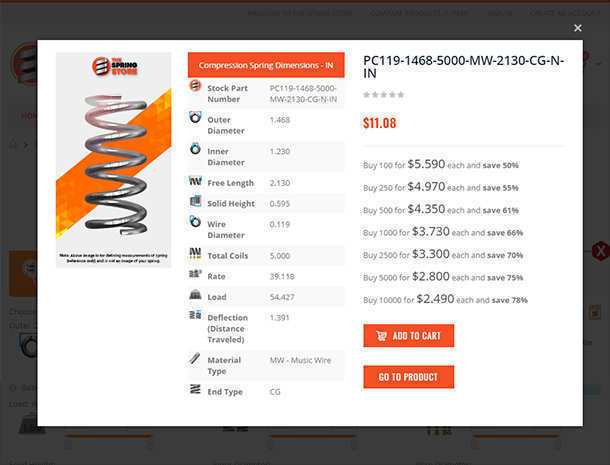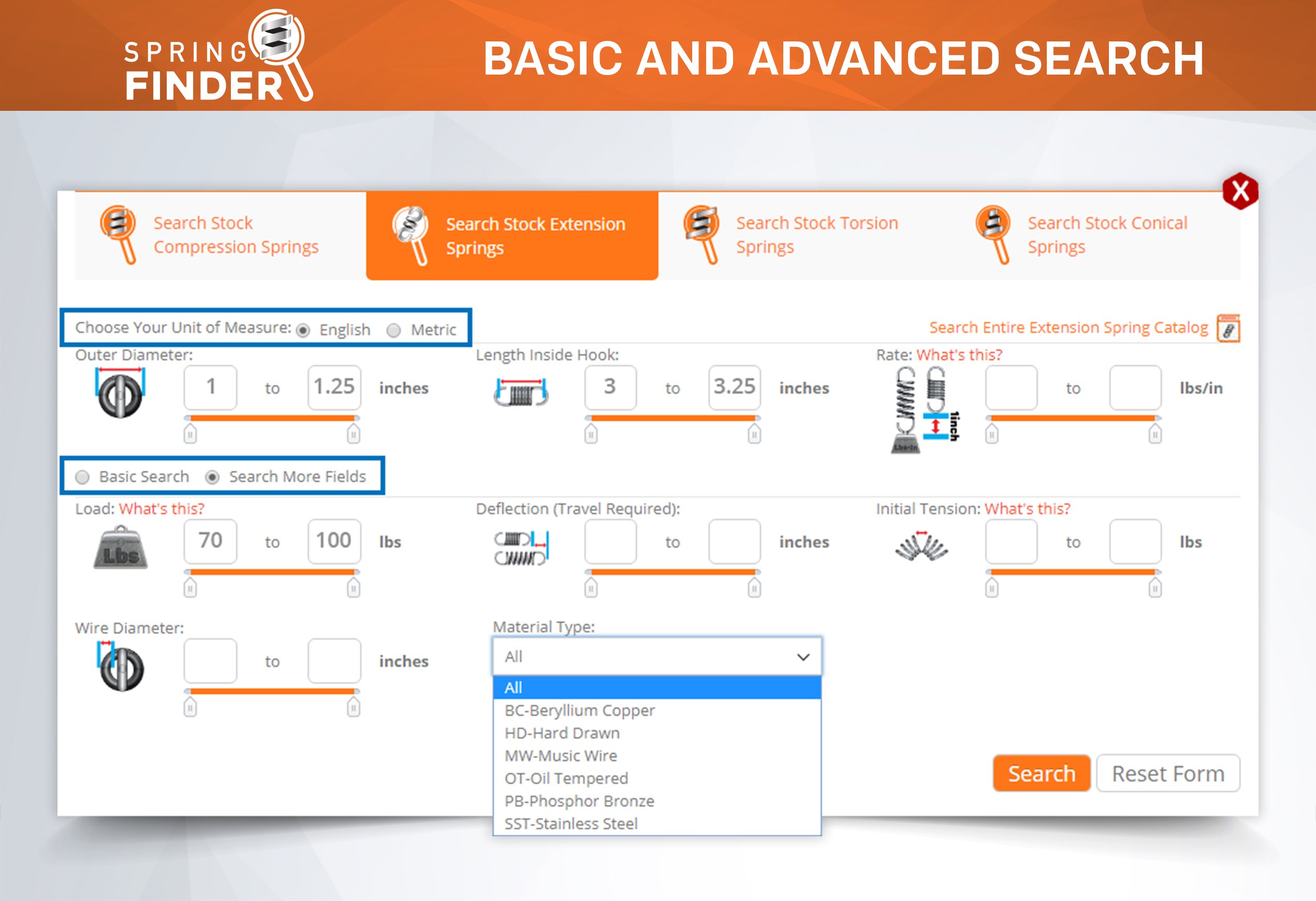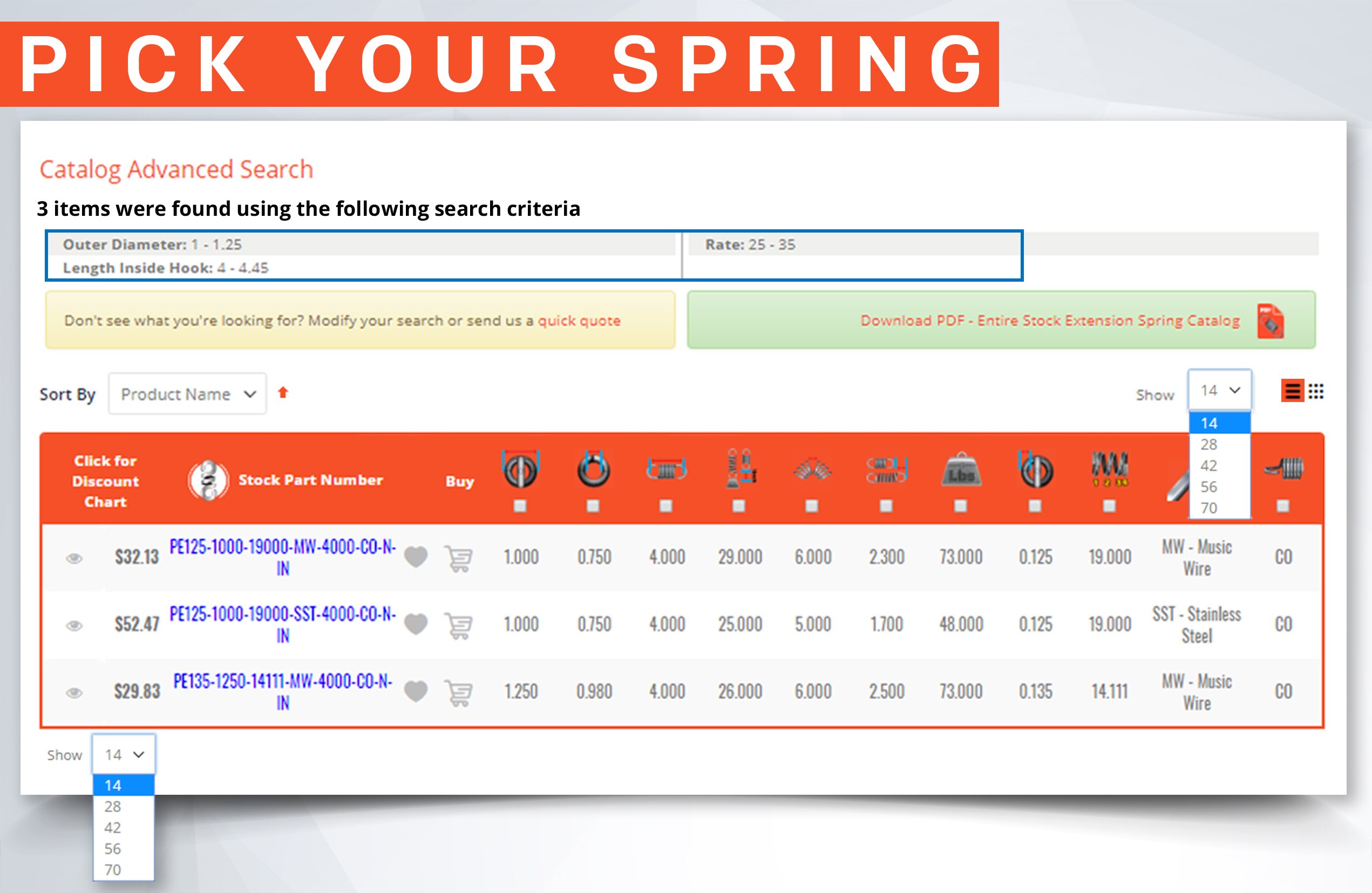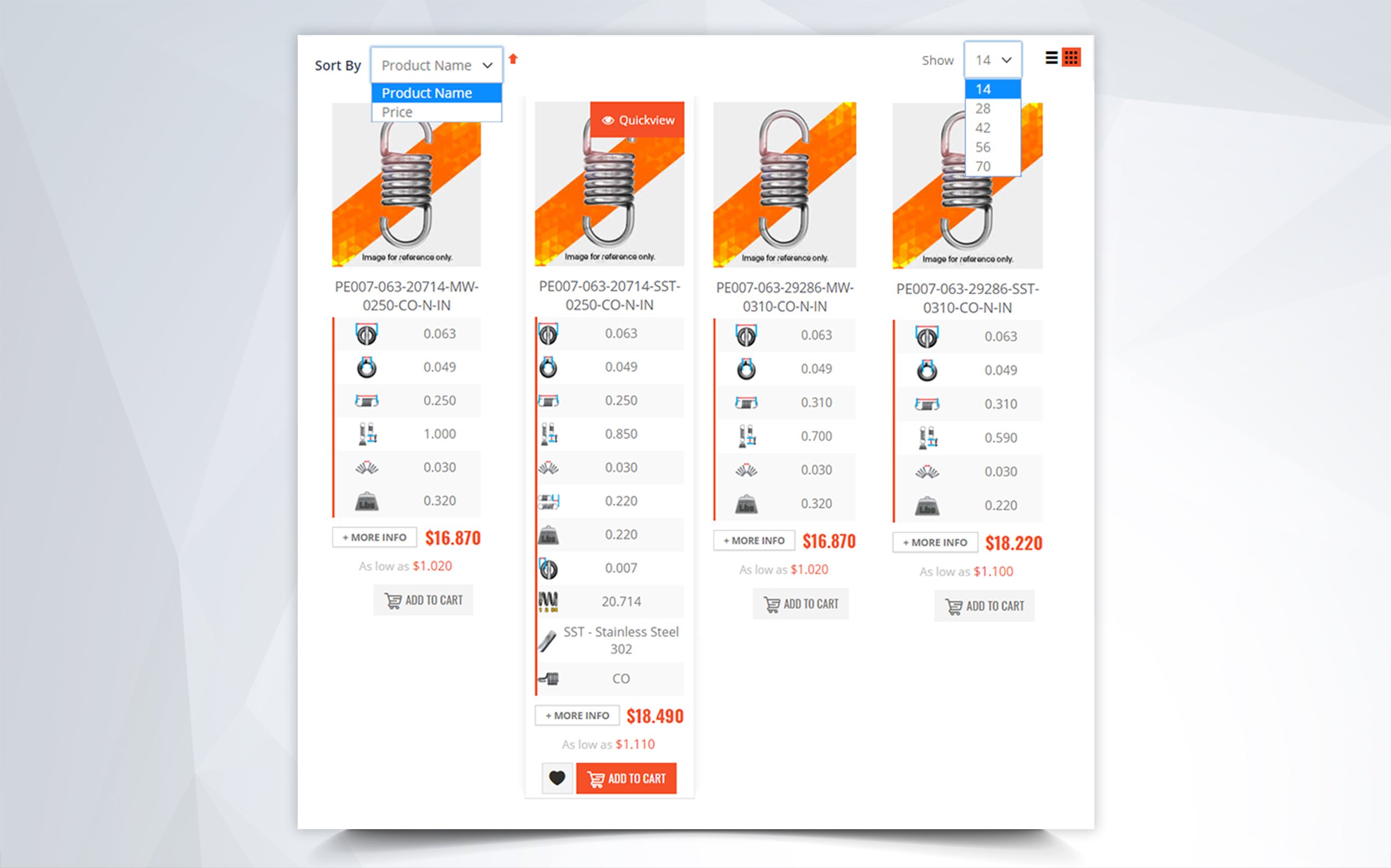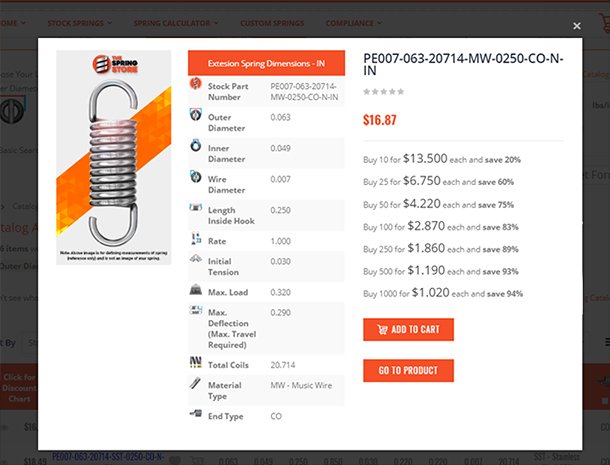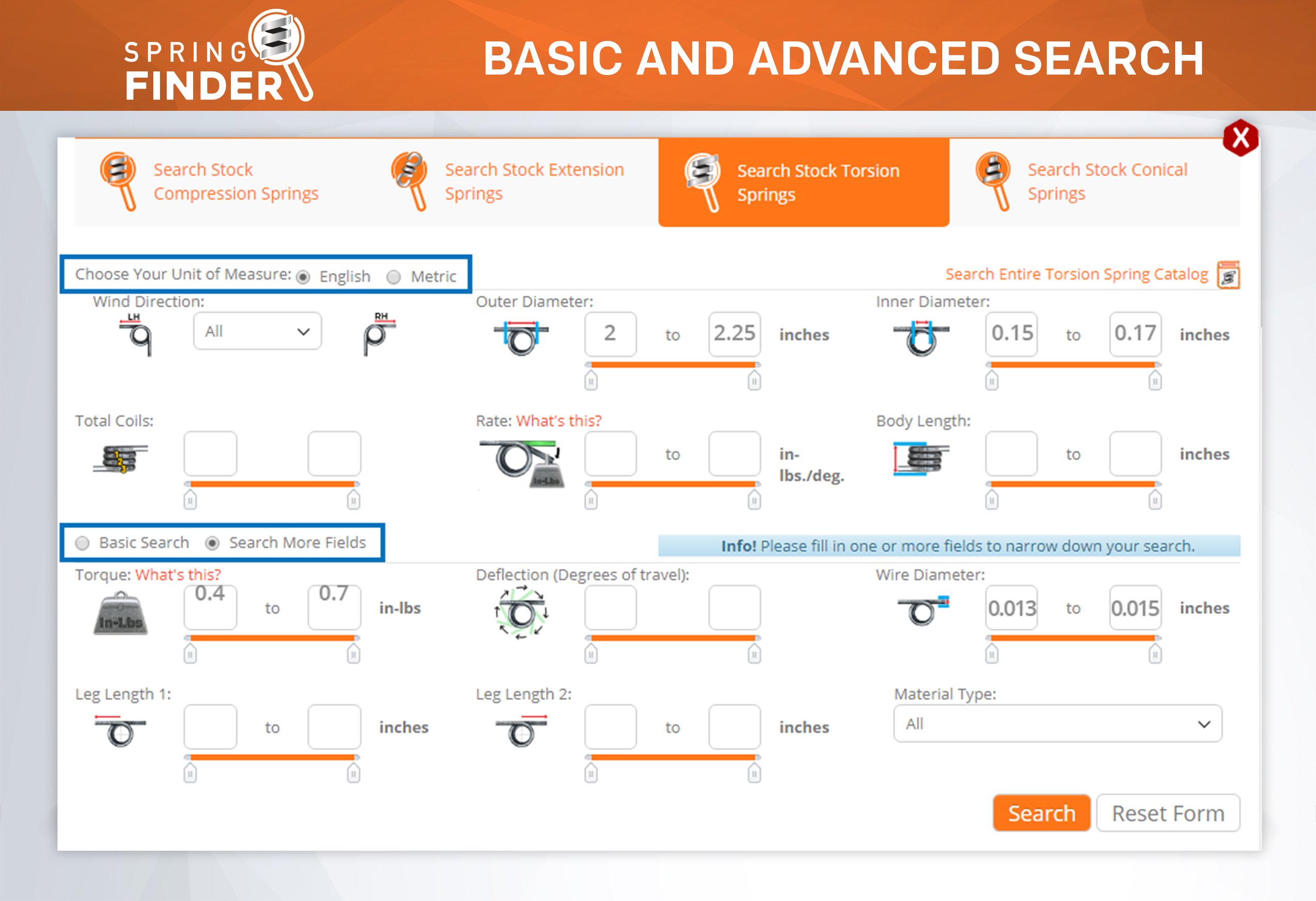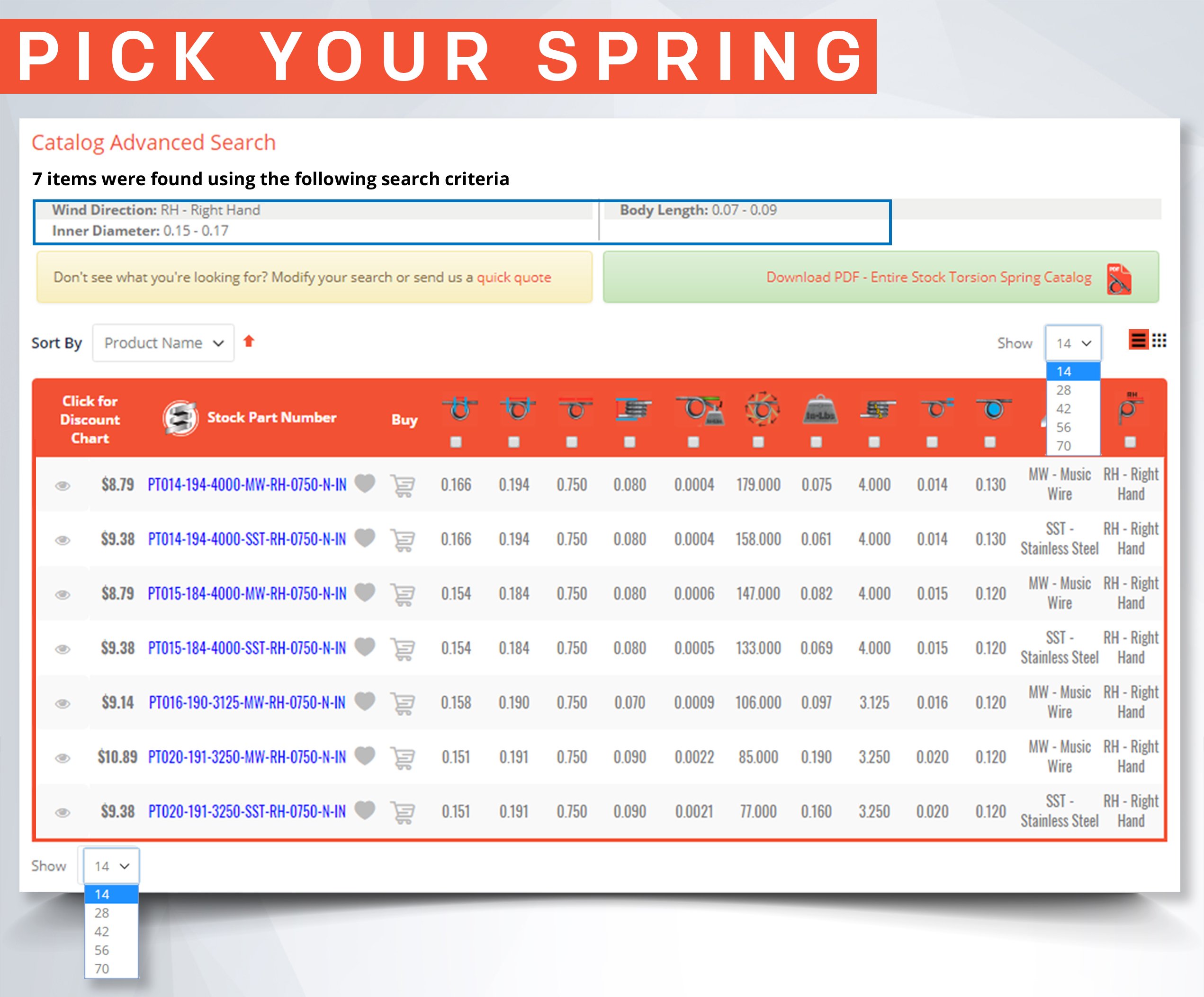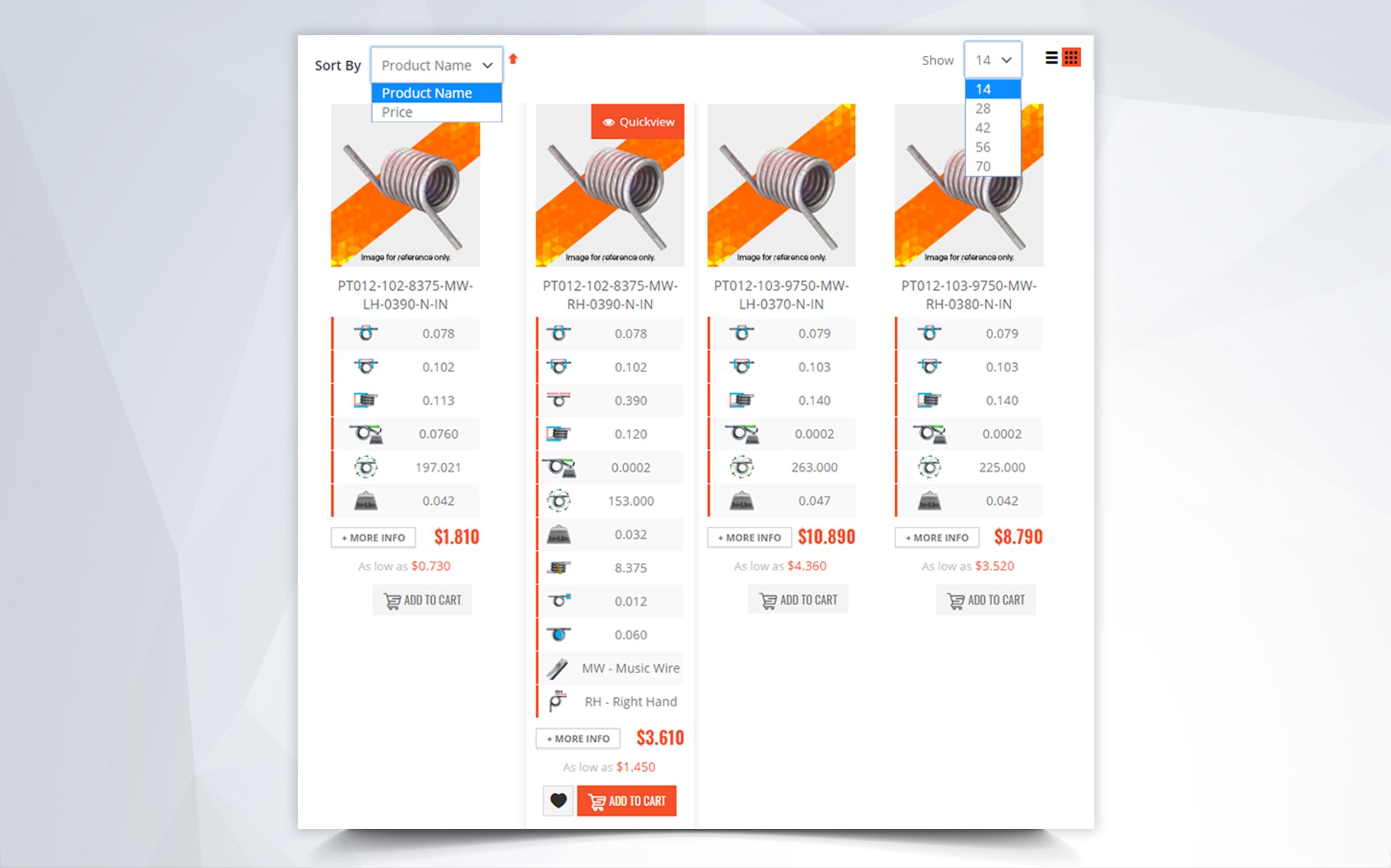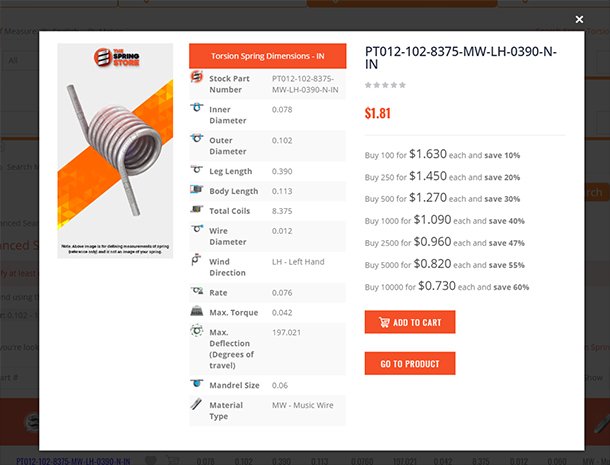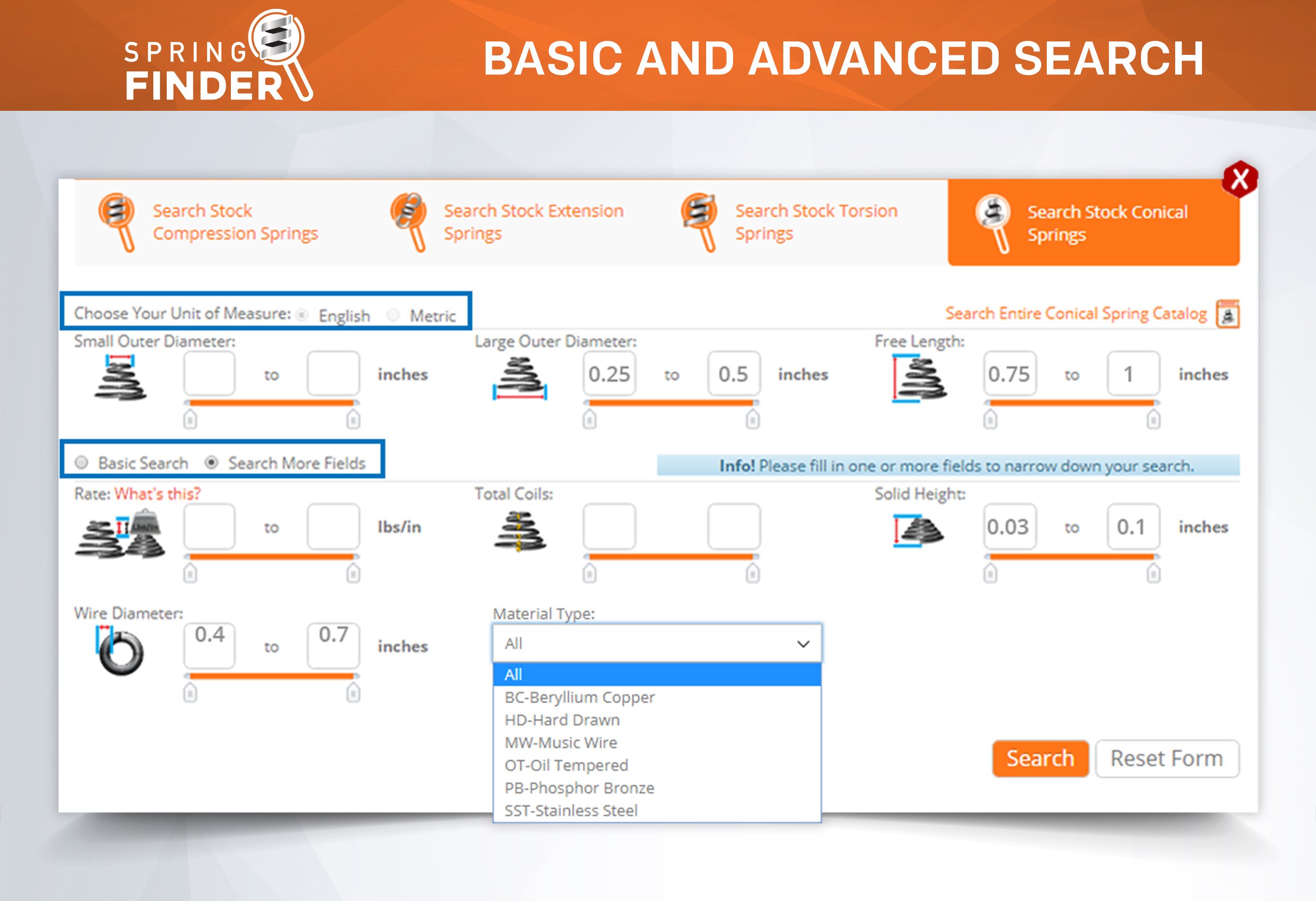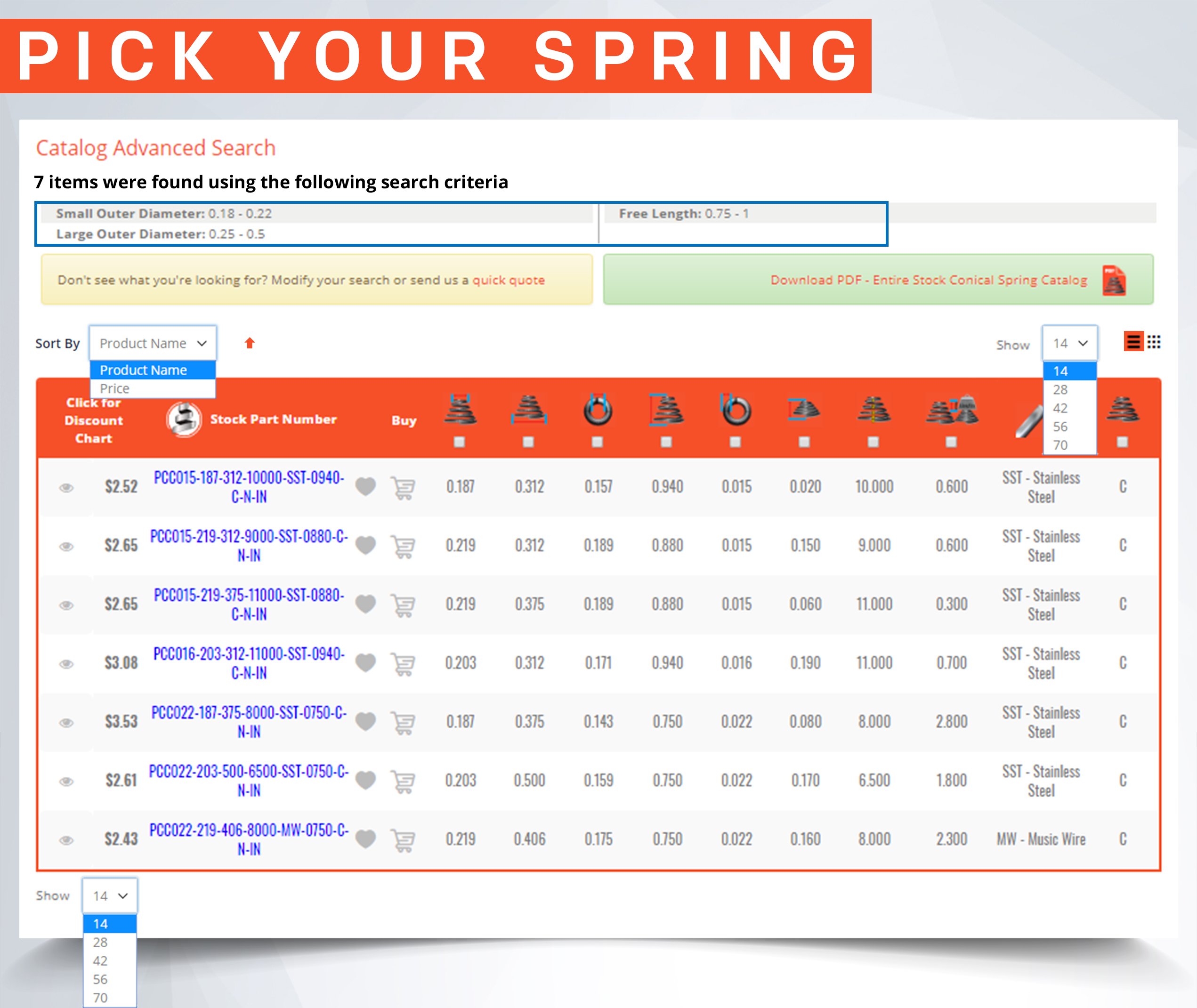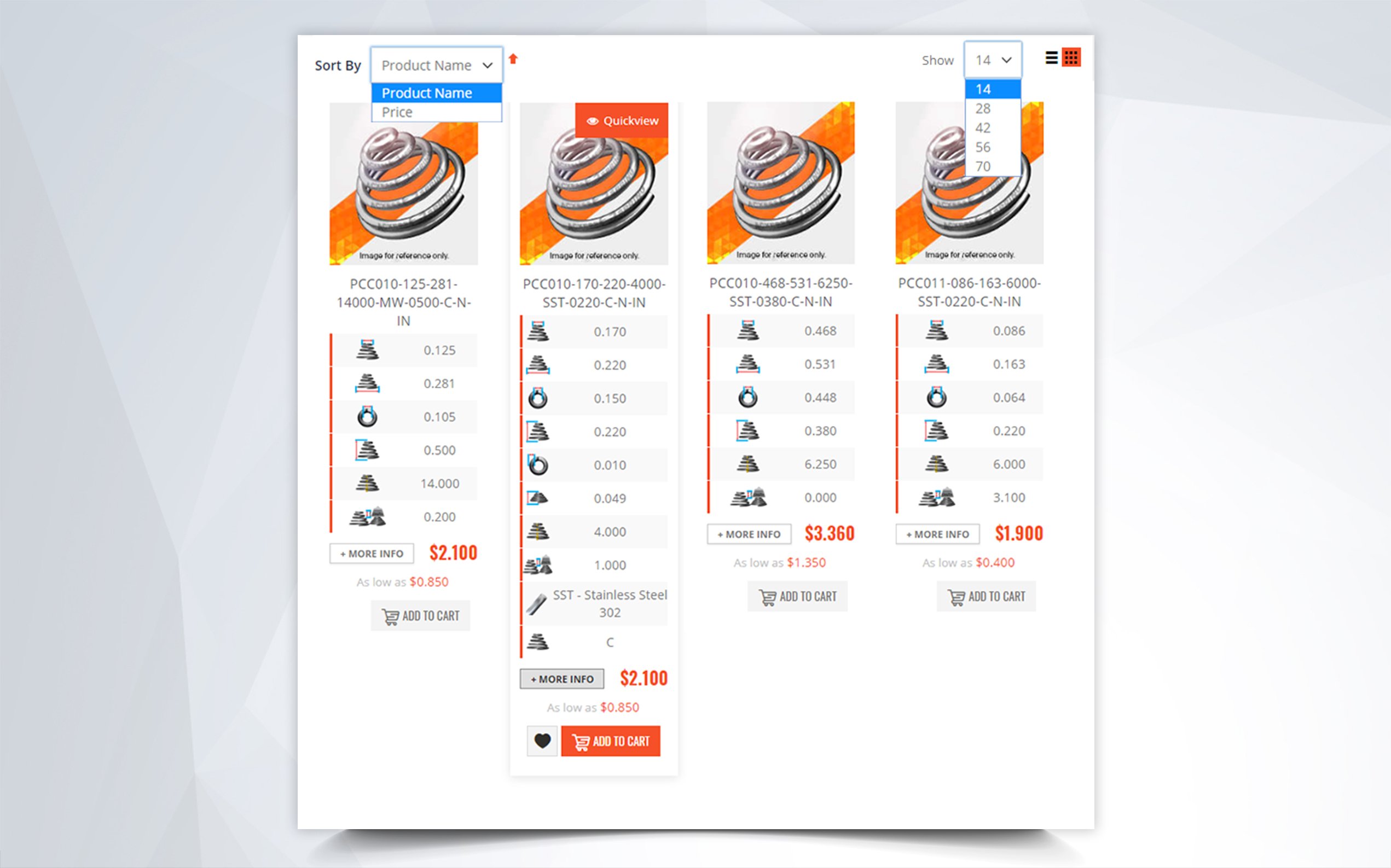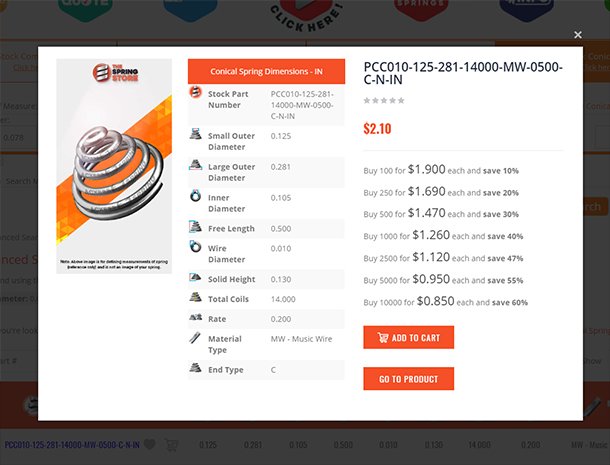Spring Rate Calculator
Definition: Spring rate, also known as spring constant, is the constant amount of force or spring rate of force it takes an extension or compression spring to travel an inch of distance or, in the metric system of measurement, a millimeter of distance. The units of measurement of rate in the English System are, lbf/in (pounds of force per inch) or N/mm (newtons per millimeter) in the Metric System.
Spring rate is the most important part of your compression or extension spring design, but it is also the most complicated spring calculation. You have to take every one of your spring's physical dimensions into account including the material type. Below, you are provided with our free online spring calculator, "Spring Creator", to make your spring calculations a lot easier and faster.
The calculation of spring rate is linear on extension and compression springs; unlike torsion springs where the force is radial. Knowing your spring rate will determine if your spring will function correctly under your working loads. The formulas shown below will explain just how to calculate your compression and extension spring rate.
Formula to Calculate Rate:
D = D outer - d G = E ÷ 2 ( 1 + V) k = Gd^4 ÷ (8D^3 na)Formula symbols:
- d = Wire Diameter
- D outer = Outer Diameter
- D = Mean Diameter
- E = Young's Modulus of Material
- G = Shear Modulus of Material
- L free = Free Length
- k = Spring Rate (Spring Constant)
- na = Active Coils
- v = Poison's Ratio of Material
Formula to Calculate Rate Acquired From Hooke's Law:
k = F ÷ xFormula Symbols:
- k = Spring Rate (Spring Constant)
- F = Force
- x = Distance Traveled







